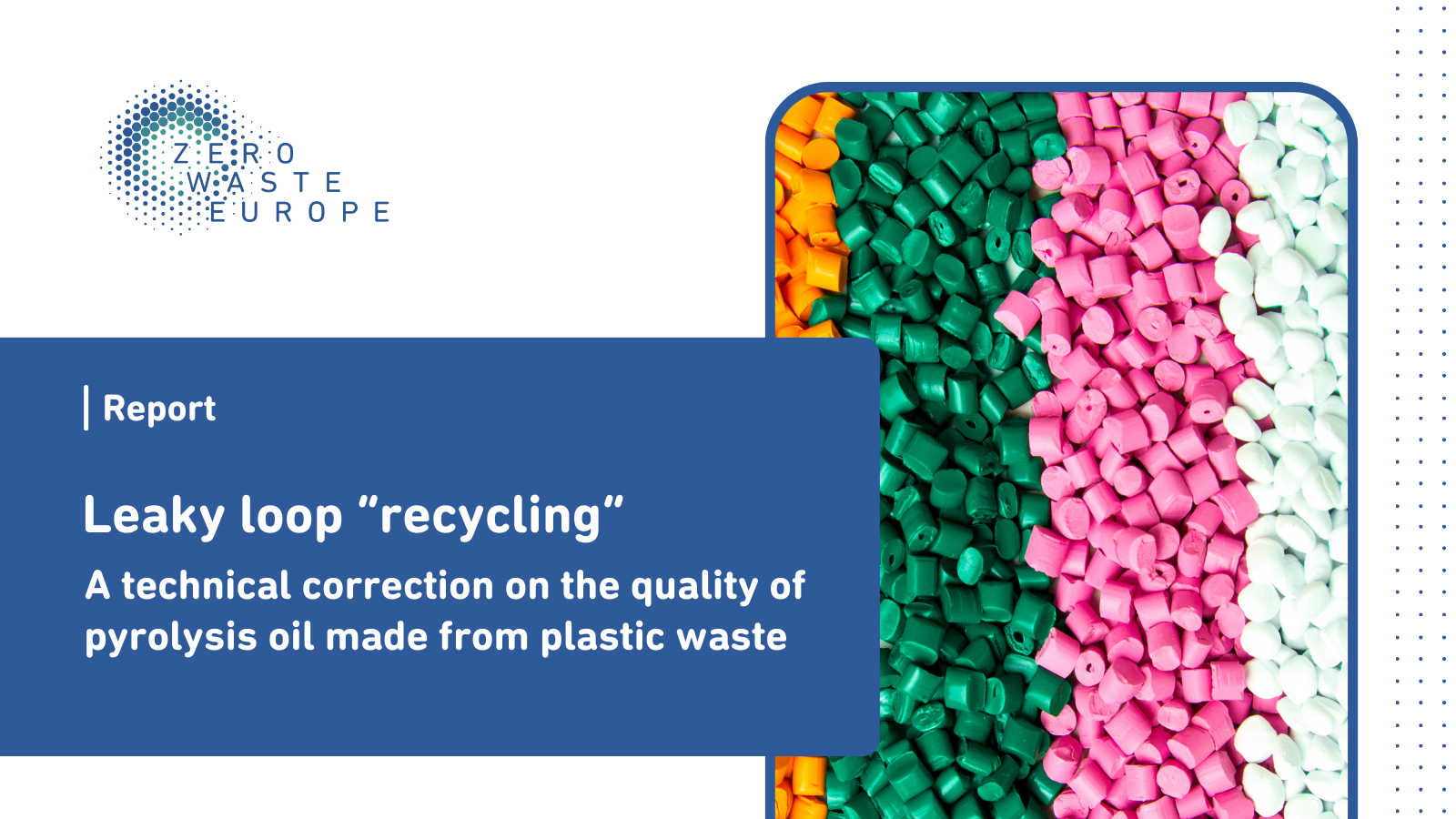
Category
CORPORATE
Project Number
230817
Subject Area
WASTE
Related Blog Images:
ST1271
New report blasts the limitations of pyrolysis technology dubbed miracle by industry
Report: Leaky loop “recycling”: A technical correction on the quality of pyrolysis oil made from plastic waste
This report examines the widely promoted pyrolysis method in plastic waste management, shedding light on its inherent limitations. Pyrolysis has been hailed as a solution by industry, but this study reveals significant drawbacks. Incompatibility with different plastic types, low oil yield, and contamination issues mean that the resulting pyrolysis oil must be heavily diluted with petroleum-based mixtures, in some cases at a ratio of over 40:1. To be used in recycled plastic production, the oil requires energy-intensive purification steps or substantial dilution with virgin petroleum naphtha, both of which are not aligned with the objectives of the EU Green Deal.
Brussels, 26 October – A new report released today has criticised a so-called “miraculous” method of plastic waste management that has been shown to be misleading in its efficacy.
Touted as a solution, pyrolysis – technology that heats up plastic waste in the absence of oxygen – produces a type of oil that industries argue can be transformed back into ‘virgin-like’ plastic.
However, this latest report published by the environmental network Zero Waste Europe underlines the limitations of pyrolysis oil. Incompatibility with different plastic types, low yield, and contamination of pyrolysis oil means it must be diluted by a petroleum-based mixture, in some cases by a ratio of over 40:1.
The report, “Leaky loop “recycling”: A technical correction on the quality of pyrolysis oil made from plastic waste” argues that for pyrolysis oil to be used in the production of recycled plastic, it should either apply multiple energy-intensive purification steps or highly dilute the oil with virgin petroleum naphtha. Both options are not in line with the ambitions of the EU Green Deal.
Discussions underway to define a harmonised European approach to end-of-waste criteria for plastic will continue until 2025, when the review is foreseen to be adopted. Such a definition is crucial for pyrolysis as industry interests are to classify pyrolysis oil as a product. Decision-makers should not overlook the toxic compounds and purification requirements needed for pyrolysis oil and lower safety standards for the sake of developing a circular economy.
Lauriane Veillard, Chemical Recycling and Plastic-to-Fuels Policy Officer, states:
“If pyrolysis oil is reclassified as a product instead of being classified as waste, as industry demands, it must meet EU requirements. We cannot afford to accept haphazardous legislation that undermines a true circular economy. Our north star should be the protection of the environment, human health and the public trust. These values should form the basis of different discussions on plastic recycling-related issues, like calculating recycled content and defining end-of-waste criteria.”
Low oil yield presents a significant problem with pyrolysis technology. Even in a best case scenario, only 2% of the plastic waste fed into pyrolysis will actually make it into the “recycled” product, the report found.
Author of the report Dr. Andrew Rollinson, states:
“Physical laws dictate that the nature of pyrolysis is to synthesise new molecules, not just decompose plastic polymers. Since these laws are unlikely to yield in response to policy goals or alter as a consequence of marketing pressure, decision-makers would be sensible to accept the fact that pyrolysis will not somehow miraculously step up to the task required. Encouragement alone will not be enough to make pyrolysis solve the problem of plastic waste created by linear thinking in plastic production.”
References
Lead Author
Title
 |  |  |
|---|---|---|
 |  |  |




